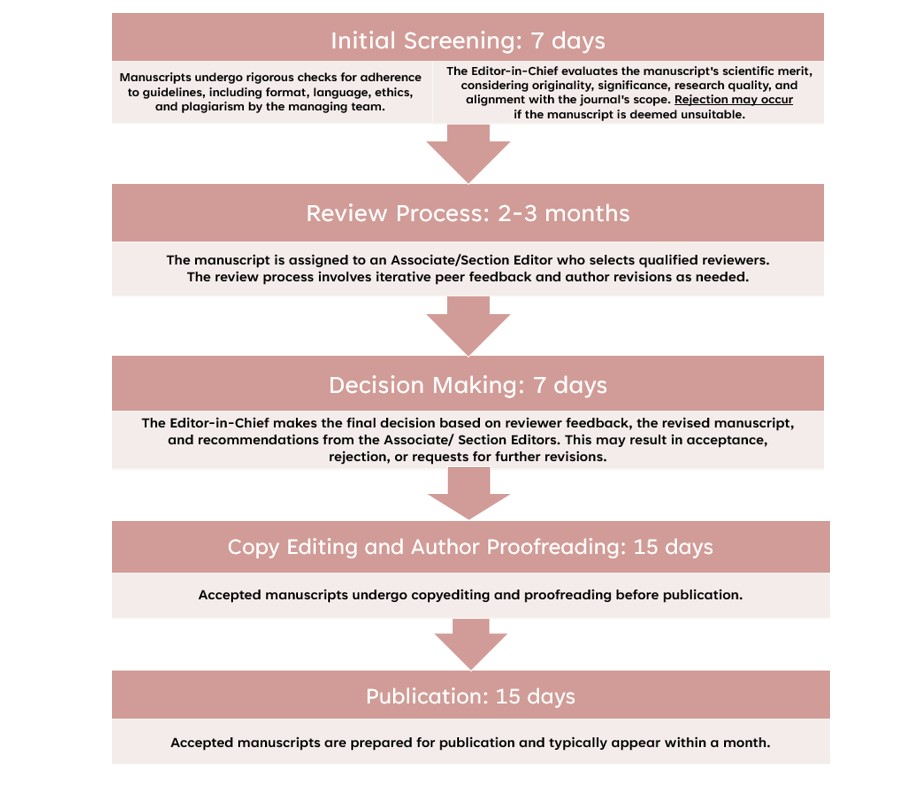Peer review process

The peer review process is as follows:
1. Initial Screening: The editorial office conducts a preliminary check for adherence to the journal's guidelines, including formatting, language, and ethical considerations. The managing team ensures that the manuscript adheres to the journal's specified format, such as font, spacing, and citation style. A plagiarism detection tool is used to check the manuscript for originality. Any instances of plagiarism are flagged for further investigation.
2. Relevance to the Journal: The Editor-in-Chief evaluates the manuscript's scientific value, considering factors such as originality, importance, and the quality of its research methods. The manuscript's alignment with the journal's goals and subject matter is also assessed. If the manuscript does not fit within the journal's scope, it may be rejected at this stage. This process typically takes approximately seven days.
3. Review Process: The Associate Editor assigns the manuscript to a Section Editor who specializes in the relevant field. The Section Editor, in collaboration with the Associate Editor, identifies at least three independent reviewers with appropriate expertise, ensuring that these reviewers are affiliated with institutions different from both each other and the authors' affiliations. This selection process typically takes 10 to 14 days. The reviewers are invited to assess the manuscript, providing feedback on its scientific value, originality, clarity, and overall quality. The Associate Editor collects and analyzes the reviewers' evaluations, considering their comments and recommendations. The author will have an opportunity to revise their manuscript. This review stage can take approximately one to two months.
4. Decision Making: Based on the reviewers' assessments and the evaluation of the Associate Editor and Section Editor, a summary of the key considerations raised in the reviewers' comments, along with the revised manuscript, will be submitted to the Editor-in-Chief for a decision. The Editor-in-Chief will determine whether to accept the manuscript, reject it, or request additional revisions.
5. Copy Editing and Author Proofreading: If the manuscript is accepted, it undergoes copyediting to address grammatical errors, inconsistencies, and clarity issues. The authors are provided with a proof copy of the edited manuscript for review and to make any necessary corrections.
6. Publication: Once the authors have approved the final version, the manuscript is prepared for publication in the specific issue of the journal. This process typically takes approximately one month from acceptance to publication.
Additional Considerations:
Single-Blind Review: To ensure objectivity, a single-blind review process is employed, where the authors do not know reviewers’ identities.
Ethical Considerations: The AHSTR maintains strict ethical guidelines to prevent plagiarism, conflict of interest, and other misconduct.
Open Access: The AHSTR adopt an open access model, making the published articles freely available to the public.
By following a rigorous peer review process, the AHSTR strive to maintain high standards of quality and ensure the dissemination of reliable and valuable research.









